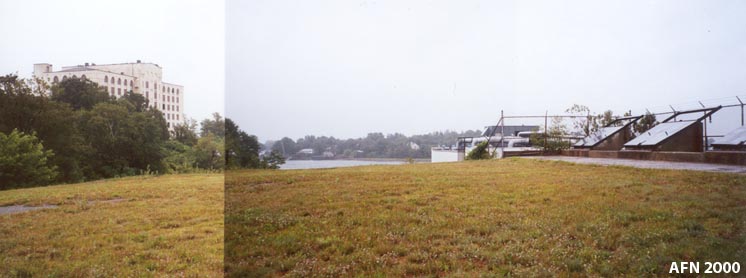
The site of Fort Sullivan, with the Naval Prison in left background.

The historical marker for Fort Sullivan, erected in 2000.
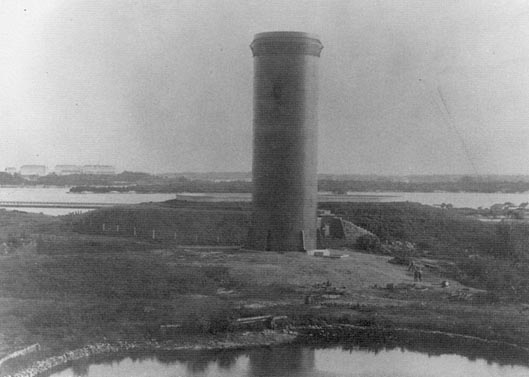
The site of Fort Sullivan is on Seavey's Island, part of the Portsmouth Naval Shipyard, near the old water resevoir site. The old Naval Prison, built in 1905 - 08, now occupies the top of the bluff, near where the fort is believed to have been built.
The earthwork fort was first built in 1775 by the New Hampshire militia, in conjunction with Fort Washington on Pierce's Island and Clark's Point Redoubt on New Castle Island, and named after Major General John Sullivan, commander of New Hampshire forces in the American Revolution, and overall commander of the Portsmouth defenses in 1775. (see also N.H. war heroes) Captain Ezekiel Worthen drew the plans for Forts Washington, Sullivan, and Clark's Point, and later, with the rank of Major, relieved General Sullivan as overall commander of the Portsmouth defenses. The fort was first under the command of a Colonel Wingate in 1775, and then Captain Eliphalet Daniels after 1776, with one lieutenant and 25 artillerists. It was probably not garrisoned after 1778. The fort was regarrisoned in 1814 as British warships patrolled off the coast. In 1861 two 8-inch Rodmans were emplaced at the old earthwork. There was another battery built at the Shipyard, on Dennett's Island, facing downtown Portsmouth, which consisted of several 18-pounder guns. The fort was completely rebuilt in April, 1863 by the US Navy and Marines based at the Shipyard, as a naval battery of eleven 8-inch Rodmans, with barracks, which would protect the Shipyard from possible Confederate attacks that might slip past Forts Constitution and McClary. In July, it was manned by 117 Negro "contrabands" brought up from the South, who were to be trained as sailors and soldiers, under command of several white officers, to relieve the manpower shortage at the time. They served for 10 months until May, 1864, when they were transferred to serve as part of the crew for a "new" ship being outfitted at the yard, the USS New Hampshire (ex-USS Alabama). In August of 1863, a controversy arose concerning the Negros manning the fort. A target practice shot went astray and hit a boat in the harbor near Pest Island, killing a twelve-year-old boy from New Castle, and wounding four other passengers.
Seavey's Island was not part of the actual Shipyard holdings until 1866, after which the fort was soon dismantled. The fort site was virtually demolished in 1901 when the new resevoir and water tanks were built. Nearby Henderson's Point was demolished in 1905 in order to enlarge the ship channel for the upcoming submarine shipbuilding program. (See also: "They blew up Henderson's Point!").
The area is off-limits to the general public, as this is on an active military base. The base is, however, open to the public on the last Saturday of each month, primarily for the Shipyard Museum and Research Library. The site of the fort near Henderson's Point is marked on a walking tour of the Shipyard. Due to security restrictions, the Shipyard is now permanently closed to the general public without prior approval.


The historical marker for Fort Sullivan, erected in 2000.

The old Naval Prison, commonly referred to as "The Castle", is closed to the general public. It recieved its first military prisoners in 1908 after replacing a temporary stockade called Camp Long that was used for 1,612 Spanish POW's in 1898. (A Marine detachment from the Boston Naval Shipyard provided guard detail in 1898.) The central turreted structure of the prison was added in 1912.

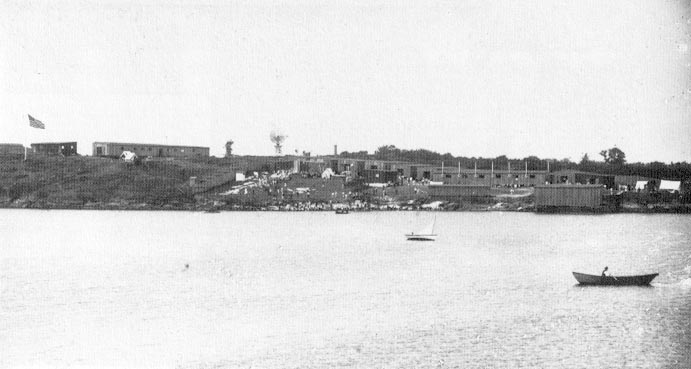
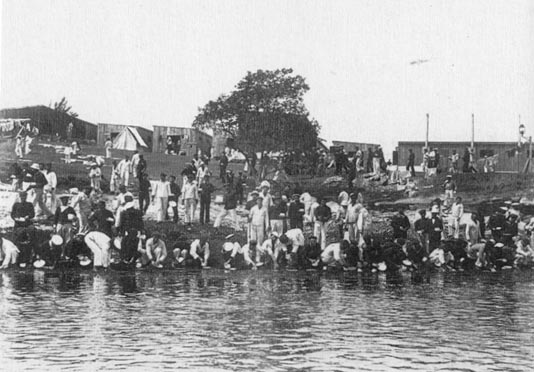

Prison population in 1918 was at 2,295 inmates. An additional wing was added in 1942, matching the original section, and the large 8-story south wing, also known as the "Fortress", was built in 1943 to accommodate the swelled ranks of wartime convicts. It was also used in 1945 to house captured crews of several German U-boats. The prison population reached its peak at 3,088 in 1945. It was finally closed in 1974, with the remaining inmates transferred to Fort Leavenworth, Kansas. This was the primary prison facility for the entire Navy and Marine Corps during its heyday, equal in security and reputation to the prisons at Fort Leavenworth and at Alcatraz Island, California. It was under renovation from 1999 to 2001 for a planned joint government-commercial leasing venture. However, that project was unfortunately cancelled in 2001 due to the death of the project chairman Joseph Sawtelle, a noted local historian and benefactor. (Read the Portsmouth Herald Newspaper article from 22 June, 1999, and also the 23 April, 2000 article).
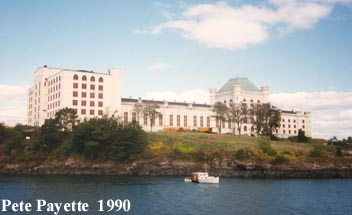
A temporary USMC encampment, called Camp Heywood, named after the USMC Commandant of the time, was established at the Shipyard in 1898 following the Spanish-American War, for the returning veterans. The site, just north of the Naval Prison, was later used as a Naval Reservists' camp during World War I.
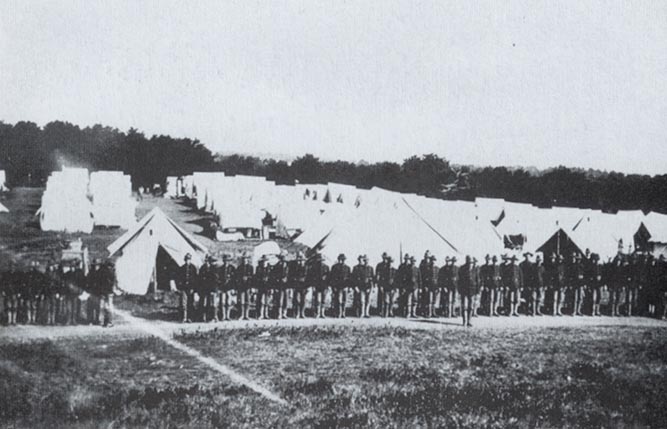
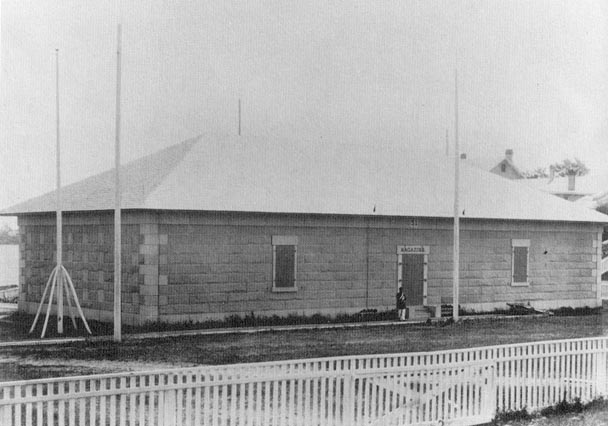
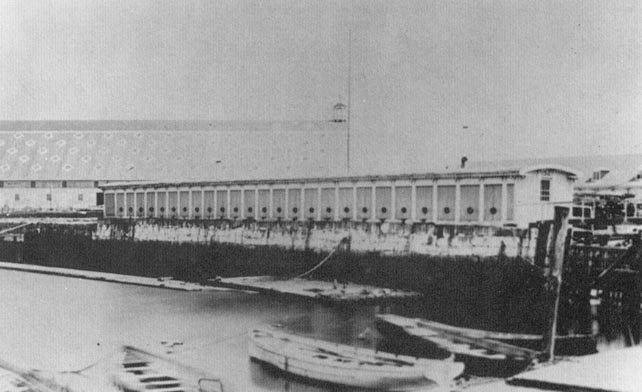
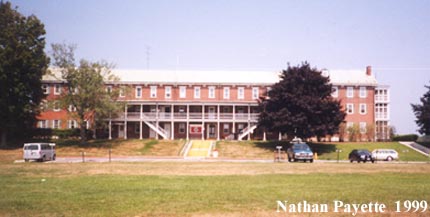
The USMC Barracks, 1824-1987.
The Marines were first stationed here in 1808.
The post was permanently withdrawn in 1987.

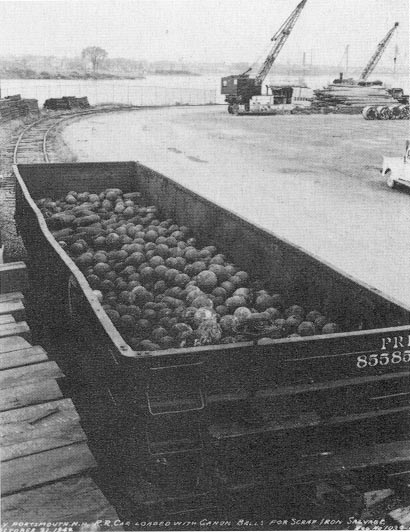
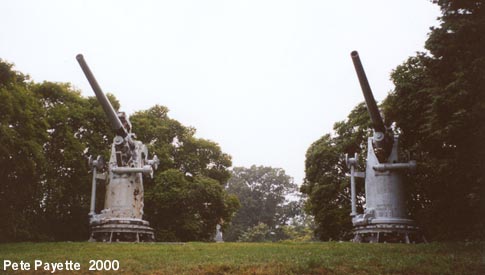
Two Fisher MK22 (1942) 3-inch submarine deck guns placed near the Marine Barracks as an unmarked memorial.
See also Portsmouth Naval Shipyard Museum
History of Portsmouth Naval Shipyard from FAS.org
History of Portsmouth Naval Shipyard from SeacoastNH.com
for information on the general history of the Naval Shipyard.
Read another interesting article in the Portsmouth Herald from 12 March, 2000, about the simmering "River War" between Maine and New Hampshire.
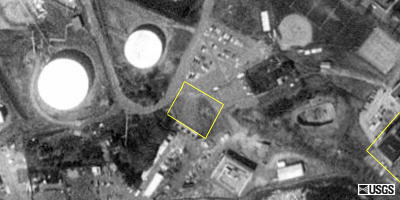
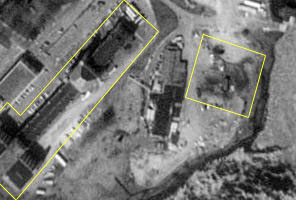
NOTE: Strawbery Banke Museum images displayed on this page are to be used for non-commercial, personal, and private use only. Any other use, including publication, copying, or redistribution of said images in any manner is prohibited without prior written permission from Strawbery Banke Museum, Portsmouth, New Hampshire, and from American Forts Network.